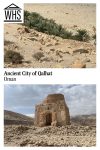Ancient City of Qalhat
By Alison Watt
What is the Ancient City of Qalhat?
The Ancient City of Qalhat was a major port on the Arabian Sea and a significant point on the trade route between Arabia and Eastern Asia. Various goods passed through the city port, such as pearls, gemstones, silk, incense, spices and even horses. The city thrived from the 11th century CE under the Kingdom of Hormuz until the presence of the Portuguese in the region and subsequent attacks. Around the same time, Muscat took over as the primary hub. The settlement was abandoned over time and has been uninhabited since the late 16th century CE.
Disclosure: This article contains affiliate links. Making a purchase through an affiliate link will mean a small commission for this website. This will not affect your price.
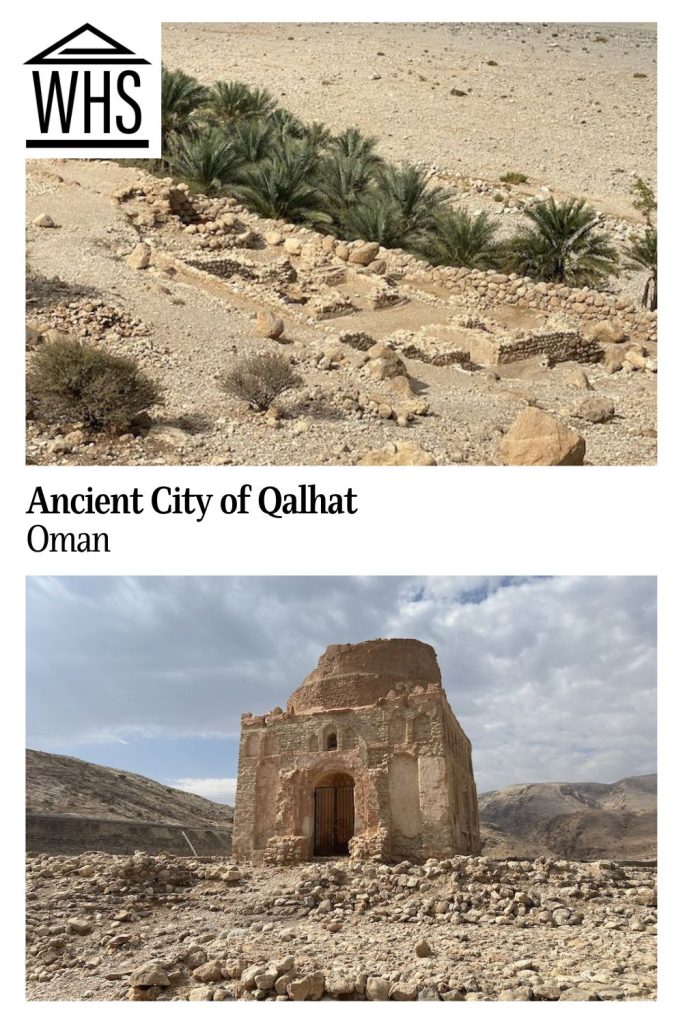
The archaeological site consists of a mausoleum, ruins of various buildings, a cistern, a mosque, baths and a necropolis. The houses, now mere ruins and foundations, were up to three storeys high. Several structures, such as the Friday Mosque, have undergone conservation work in recent years.
The mausoleum is known as Bibi Maryam Mausoleum or Tomb and there are opposing opinions on whether it was built for Bibi Maryam by her husband, Baha al-Din Ayaz, King of Hormuz, or by Bibi Maryam for him. The most popular version is that it is the final resting place of Bibi Maryam.
Why is the Ancient City of Qalhat a UNESCO World Heritage site?
The Ancient City of Qalhat has been included on the UNESCO World Heritage list as it is significant in the history of the Kingdom of Hormuz (11th-16th century CE). It became, because of its importance in trade, effectively the second capital of this very large realm. It is key to the study of the Kingdom of Hormuz.
Because of its place as part of the thriving trade routes to India and the Far East, Qalhat shows the influences this international contact had on its architecture.
Several well-known travellers visited Qalhat between the 11th and 16th centuries CE and referred to it in their records. These included Ibn Battuta and Marco Polo.
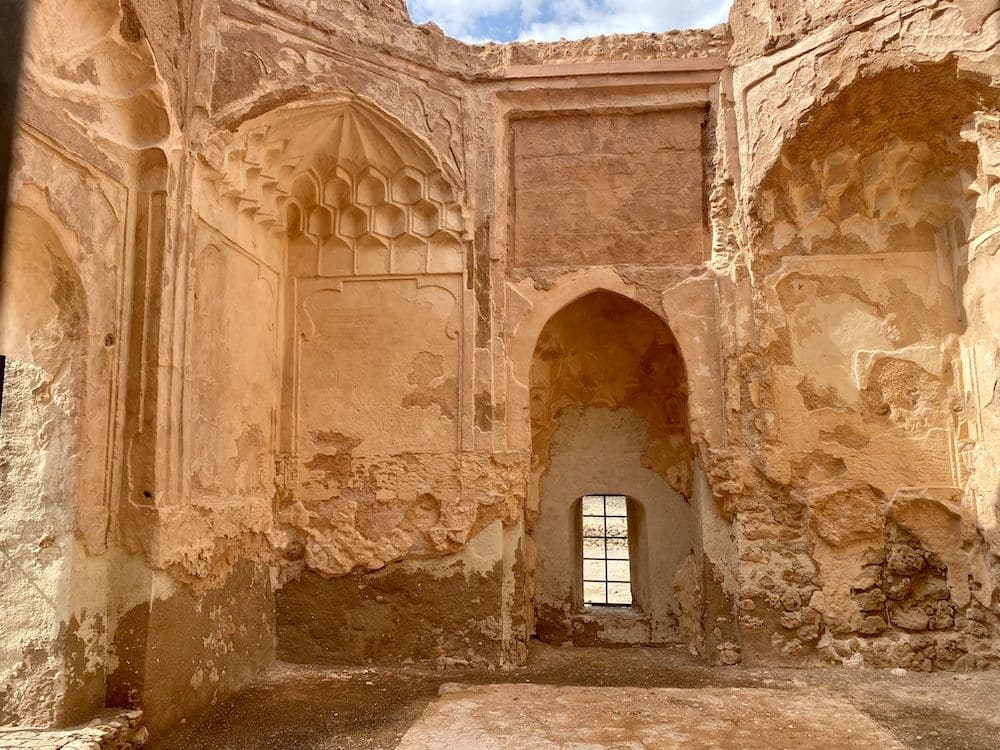
What can you expect on a visit to Qalhat?
The Bibi Maryam mausoleum has some similarities to other structures of a similar age in the region, such as old forts and houses, but it also has some very different features. I felt that visits to other areas in Asia probably inspired the architect. Although less elaborately decorated, similar tombs can be seen in ancient Persia.
Built of coral reaped from the nearby shores and finished with mortar, it is still an impressive tomb today. Steps lead down to the basement and grave. A tower stands over the tomb but the dome over it has long collapsed. There are gates on all sides, with a larger main gate at the entrance. The architecture includes arches and mouldings with geometric designs.
Nearby buildings, such as the Friday Mosque, were also built out of coral but some smaller houses and stores were built using rocks from the wadi bed. These buildings have collapsed, most likely during earthquakes as it sits on a fault line. The mausoleum has survived, however, due to its extremely thick walls.
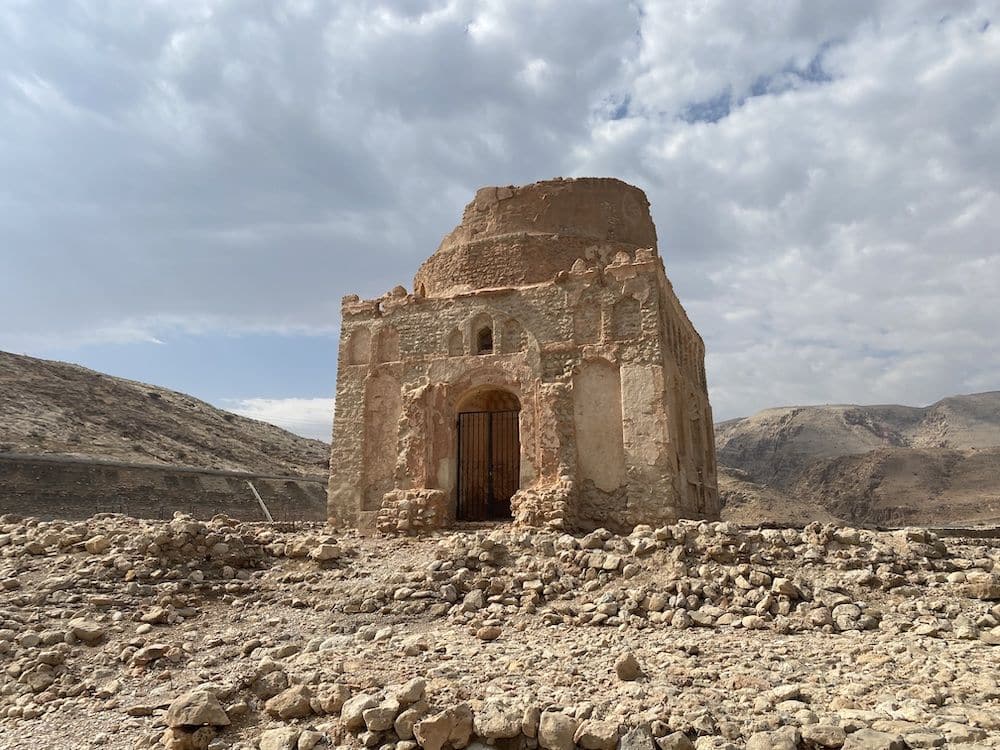
Besides the mausoleum and the mosque, the rest of the site – about 34 hectares (84 acres) in size – lies in ruins. There are a few remnants of walls – the fortification walls, houses, and a cistern, all more useful for archaeologists than tourists.
Is the Ancient City of Qalhat worth visiting?
It’s worth adding the Ancient City of Qalhat to an Oman road trip itinerary but I don’t feel it merits a trip all on its own. I stumbled across it on an overnight stop between Muscat and Ras Al Jinz but was pleasantly surprised.
Compare rental car prices in Muscat here.
If you can enter the archaeological site, around 30 minutes (max 60) would be long enough to visit and add another 15-30 minutes to visit the nearby settlements and graveyards.
A visitor centre is planned for the main site when it reopens after the excavations are complete. No date is set for that.
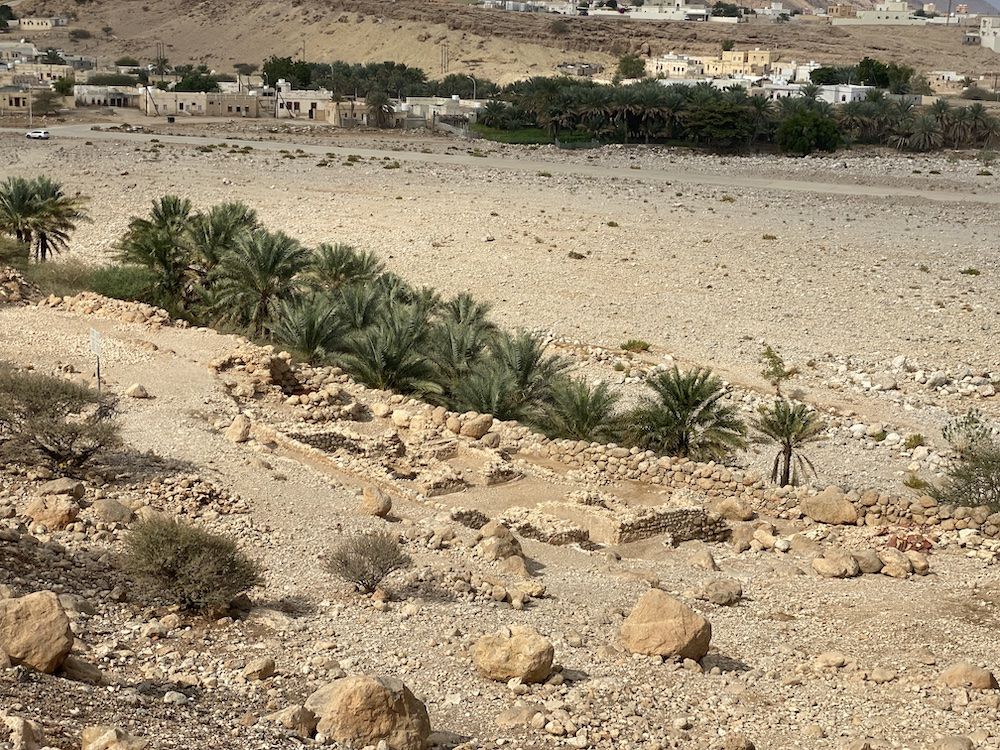
What sorts of travelers would like Qalhat?
Travellers who, like me, are instantly excited to see old buildings and those fascinated by tombs, mausoleums and similar would like to visit this site. It would also be interesting for anyone passionate about history in the region, particularly the period from the 8th to 16th century CE.
Most single-day and multi-day tours of Oman begin in Muscat. Here’s a listing of tours, and here you can find accommodations in Muscat.
Tips for visiting the Ancient City of Qalhat
The site is currently closed for further excavation and will be for some years. However, you may be able to walk up the hillside track to the barrier and still get a good view of the mausoleum. You’ll pass parts of the old city on the way up.
If this isn’t possible, stop at the lay-by on the highway. It’s not marked, so stay in the inside lane (coming from Sur) and don’t go too fast. You’ll see it as you approach. Keep in mind that it’s not very big and not close to the road.
After visiting the mausoleum, I recommend visiting the graves further north. If you follow the local Qalhat road (between the highway and the shore) north of the wadi, you’ll pass several graves and a few ruins of stone buildings on either side. They are visible from the road and you can park nearby and wander around them.
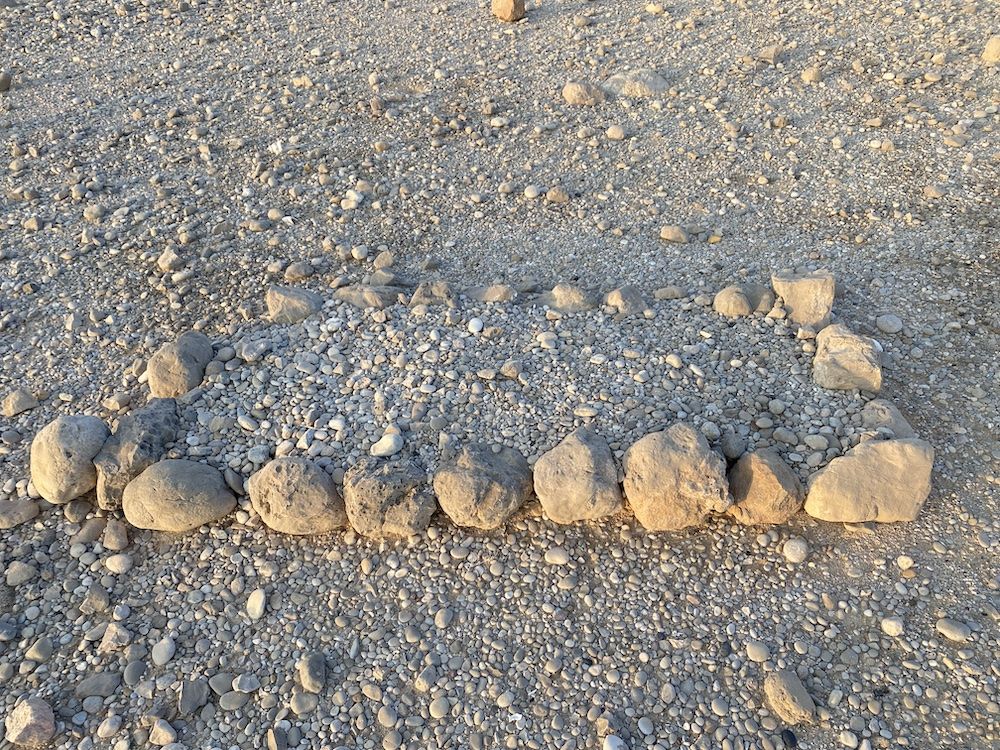
I recommend a decent pair of flat shoes with ankle support if you want to visit all sites and get a closer look. You’ll clamber over large pebbles and uneven ground in some areas. (Yes, I managed to fall over!) I’m sure it goes without saying that graves should be walked around and not over.
See the full list of Oman’s UNESCO sites, including Bahla Fort.
Where is Qalhat?
The ancient site is on the east coast of Oman, just twenty miles north of Sur and 110 miles south of Muscat.
As you drive on the Muscat-Sur highway, route 17, you’ll be able to see the mausoleum between the road and the coast. There is a small lay-by where you can pull over for a better view.
The main site is currently closed to the public but for the route, go to the newer village of Qalhat near the bridge, cross the wadi and then climb up the track on the hillside. The locals are generally helpful if you ask. The other buildings are closer to the shore and not really visible from this point.
Have you been to ancient Qalhat? If so, do you have any additional information or advice about this UNESCO World Heritage site? Please add your comments below!

